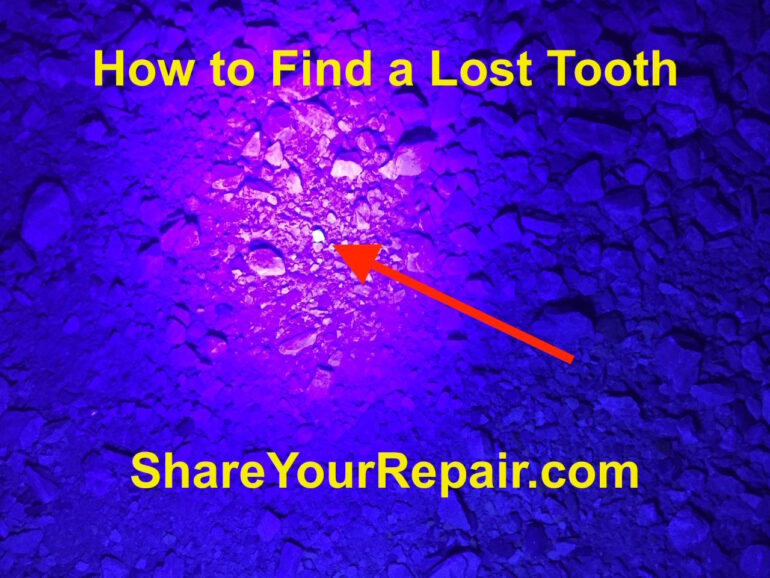Searching for a lost tooth? I found an easy way to find an impossibly lost tooth. The story is that my son lost his front tooth and was real sad because he did not know where it went. After looking around with him for a while, searching for a needle in a haystack because he lost it in our neighbor’s crushed lime driveway, I started to wonder how I might find it, using science. I have access to an ultraviolet flashlight at work and wondered if a tooth would fluoresce under UV light. As I thought about it more I wondered if I could actually find that tiny lost tooth in tons of crushed rock in the driveway. I did find that tiny tooth and read on if you want to learn how you too might locate a lost tooth too.
How to Find a Lost Tooth
Tools Needed:
The Back Story
My six-year-old son was running along at a friends’ house and discovered that he had lost his tooth that had been loose for some time. He showed up very sad back at our house because he really wanted to find the tooth. My heart went out to my son and as a way to show him I cared I offered to go and help him find it. I asked him to take me to where he lost it and this is where he showed me:
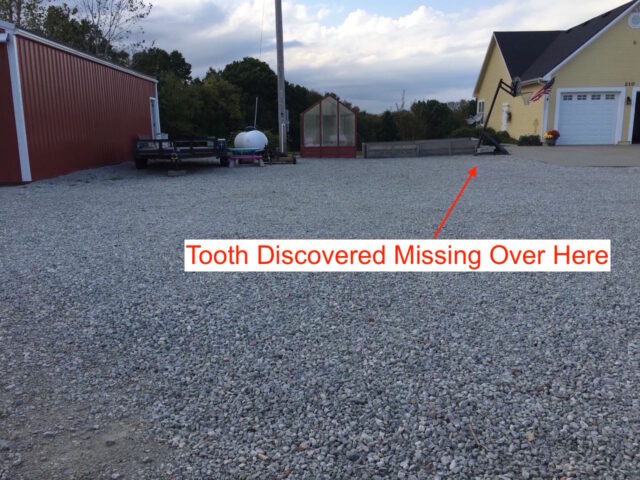
Talking about trying to find a needle in a haystack!?!?! We looked around the area but soon I concluded that there’s no way, with my naked eye, apart from a total miracle that we will find a white tooth amongst all those rocks:
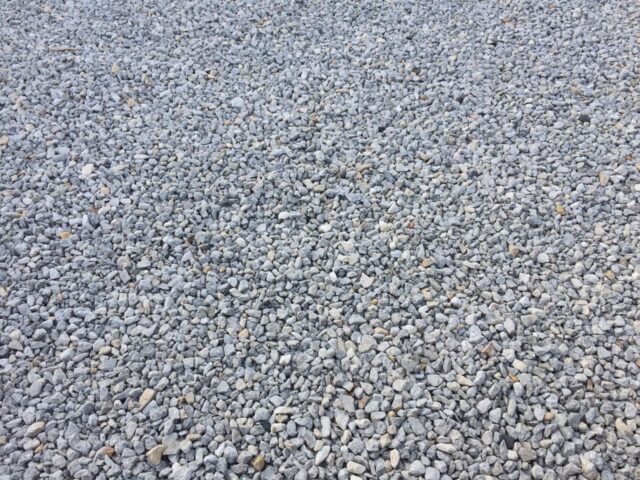
My son and I went sadly away, one tooth short, but at least we tried.
Mission: Find a Lost Tooth
My brain went to work on how I still might find my son’s lost tooth and I had an idea. I wondered if possibly I could locate it using infrared light or some other wavelength of light. I was thinking that if I had an infrared light I might be able to see the light with my phone or some other camera that could pick up infrared (and since our eyes cannot see it). I started googling the idea and I saw a picture of a person’s teeth under a UV light and they fluoresced very brightly. The more I thought about it the more I thought there was a good chance that his tooth would shine brightly amongst all those other white stones, that is if the stones don’t fluoresce too. I was not sure about that though. I have access to a UV light at work so I decided I was going to give it a try.
The UV Flashlight
Below is the UV flashlight I used. It’s actually sold as a pet urine flashlight.
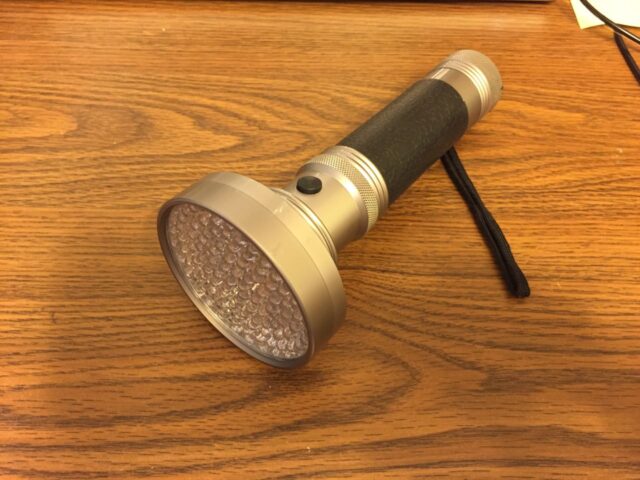
Here’s a look at the UV LEDs:
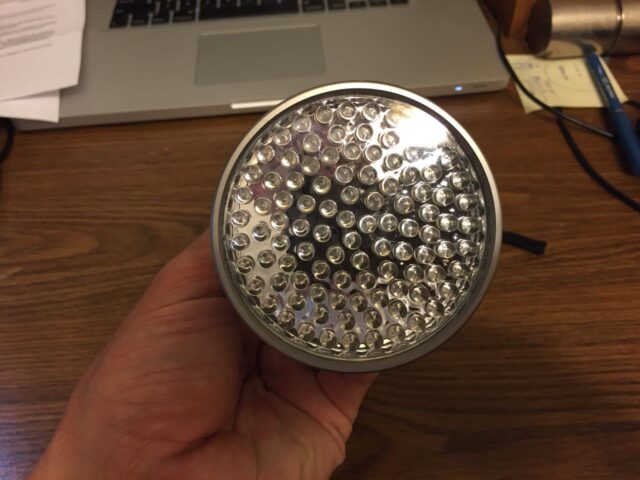
The flashlight on in the day:
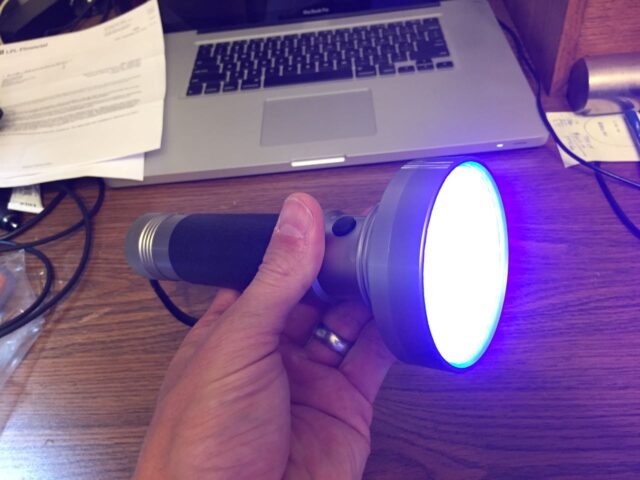
Looking into the UV LEDs in the dark:
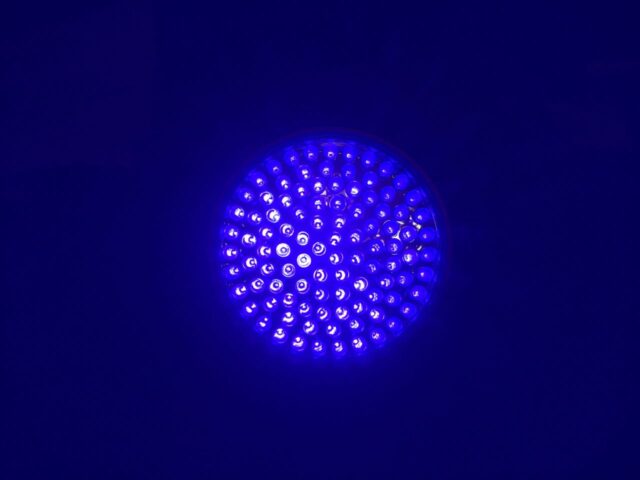
Testing the Hypothesis: My Teeth Under UV Light
The hypothesis is that human teeth will fluoresce under a UV light in contrast to limestone, which hopefully will not. I first tested the light on my own teeth:
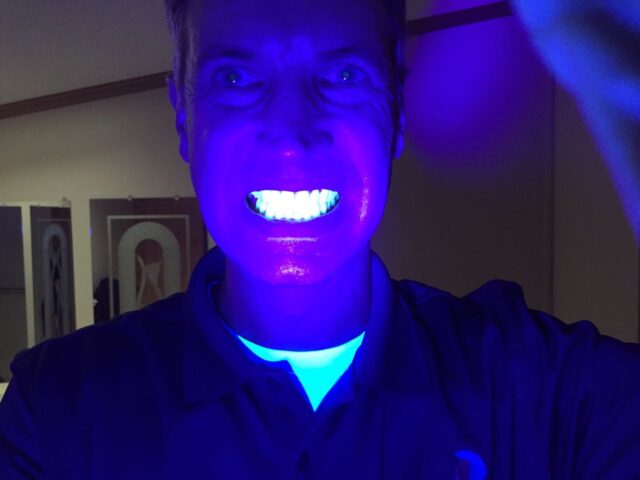
I thought of different ways to hold the flashlight, my phone, and get a limestone rock in the picture with my teeth but I just wasn’t going to bite down on a rock so I gave up on contrasting a rock to my own teeth. As far as what teeth look like under UV light I’d say that is an overwhelming success, and my teeth aren’t exactly bright white. So now the question is whether a tooth will brightly contrast a background of crushed limestone.
Testing the Hypothesis: Tooth Versus Limestone
My daughter has a jar of her baby teeth so I found them and set up an experiment on the carpet with a chunk of limestone from the driveway, which I illuminated in the dark with the UV flashlight:
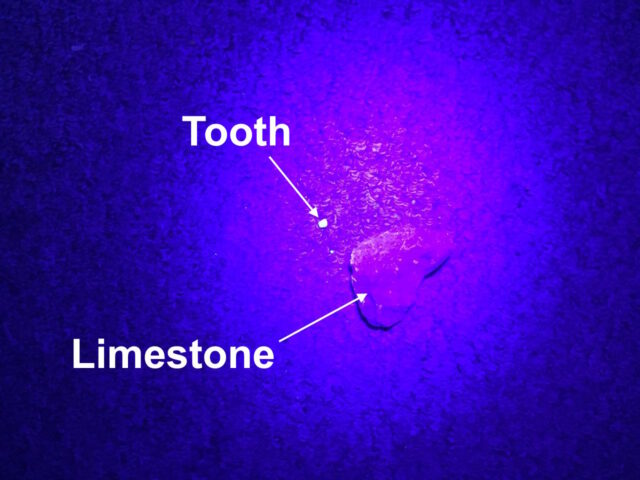
The limestone did not fluoresce and the tooth was bright white. So at this point I’m very optimistic that if that tooth is laying in the driveway, I can find it.
Searching for the Tooth: Overcoming Distractions
I headed out after dark and began to search the area where my son thought he lost his tooth. The first thing I had to lose was my socks, which reflected the UV light so much that it almost blinded me:
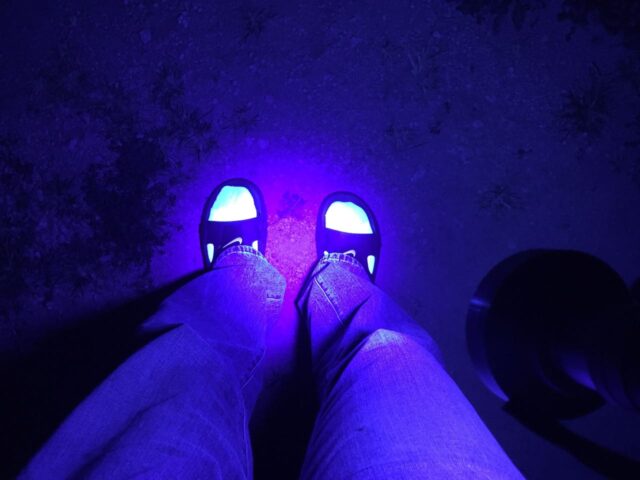
Even the white cotton sock lint on my feet showed up brightly:
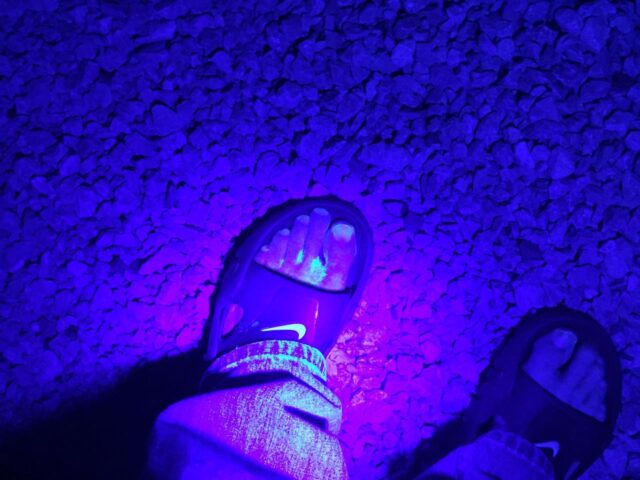
After I got past my socks and sock lint I began to find small pieces of plastic trash that shone brightly under the UV light:
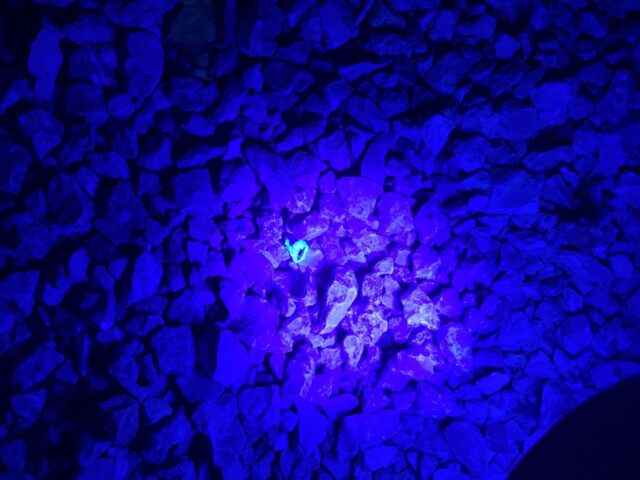
Multiple times I ran across quartz or some vein of minerals in some of the rocks that lit up:
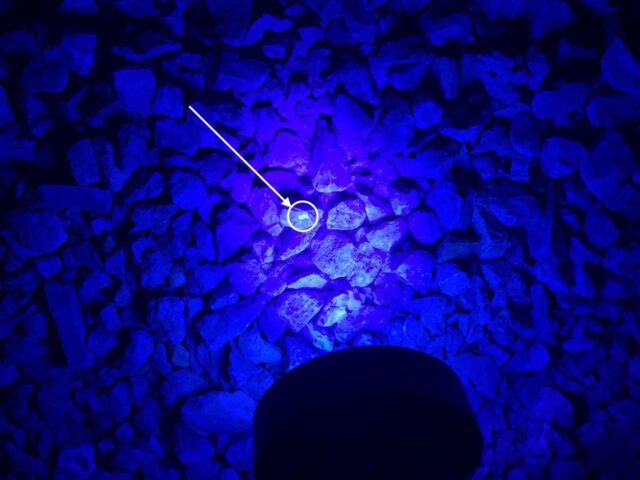
This blanket really lit up too:
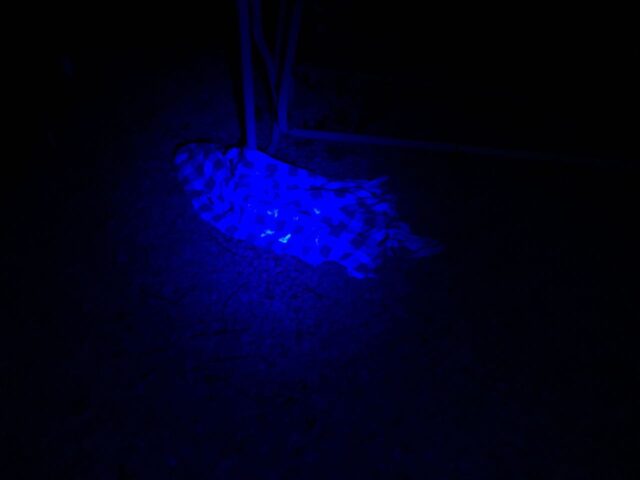
This particular large spider did not light up but definitely caught my attention:
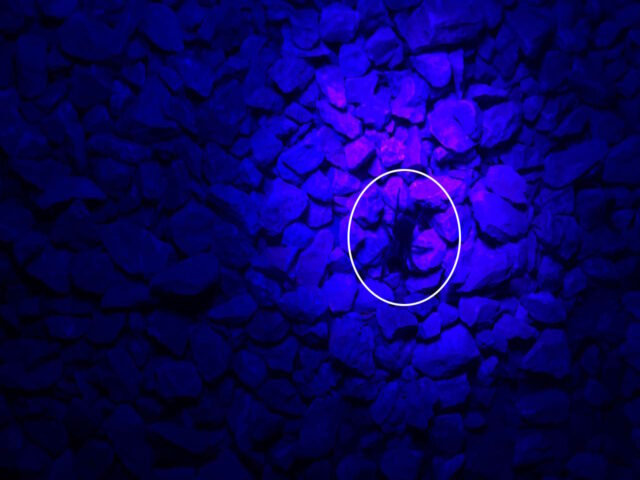
Sweet Success
I did not find the tooth in the area where my son noticed that it was not in his mouth. I really wanted to prove my theory correct though so I decided to spread out and scan the broader area. After discovering more pieces of plastic I finally saw a bright white spot:
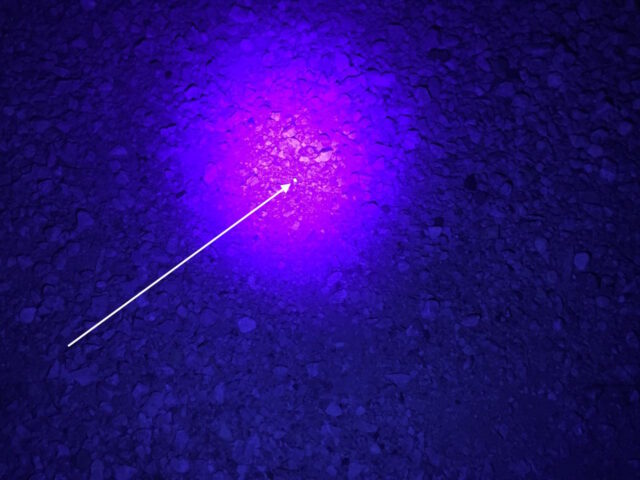
Here’s a closer-up view:
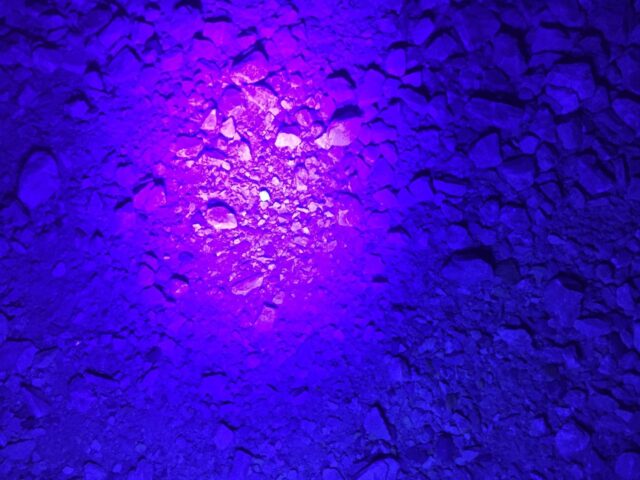
The lost tooth in hand:
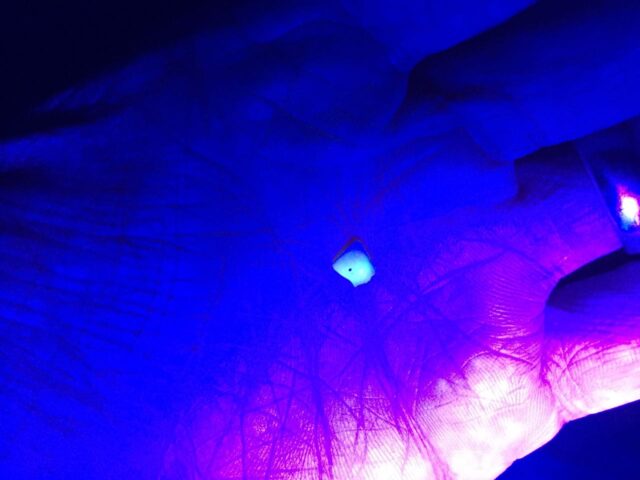
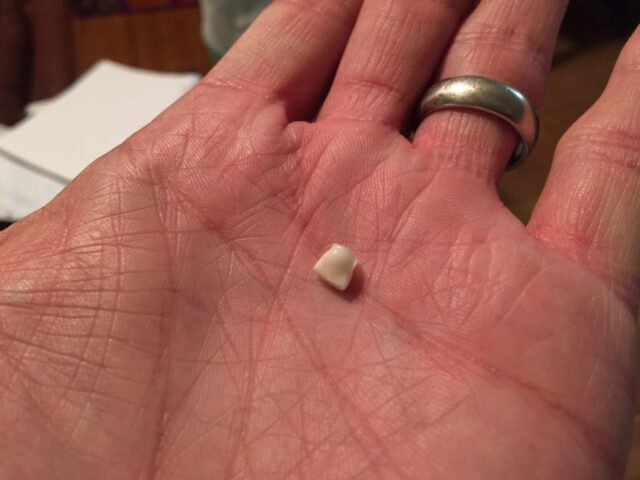
This method works really well as the tooth was found a long way from where my son thought he lost it:
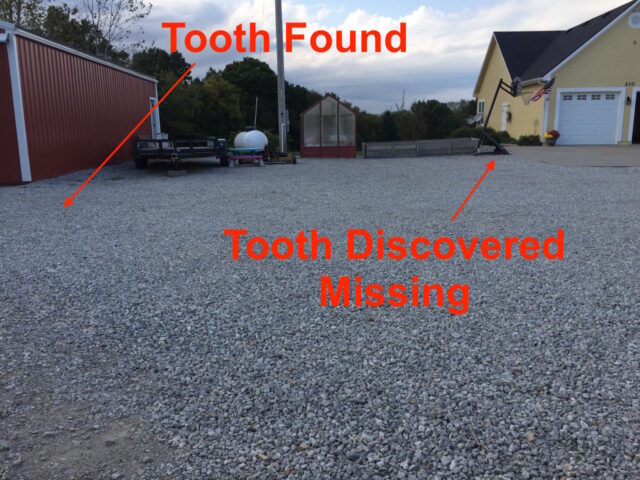
Conclusion
It was so much fun brainstorming, testing, and solving this problem and being able to give my son his long-lost tooth. I think this method would work for teeth lost in carpet, grass, sand, and other places. Any object that fluoresces can be found with UV light. For a great article explaining this phenomenon, read this page: Fluorescent Minerals. Hopefully with my help you are able to find your kid’s lost tooth. You will be their hero for sure! If you do find it, or something else that shows up under ultraviolet light, please share in the comments!
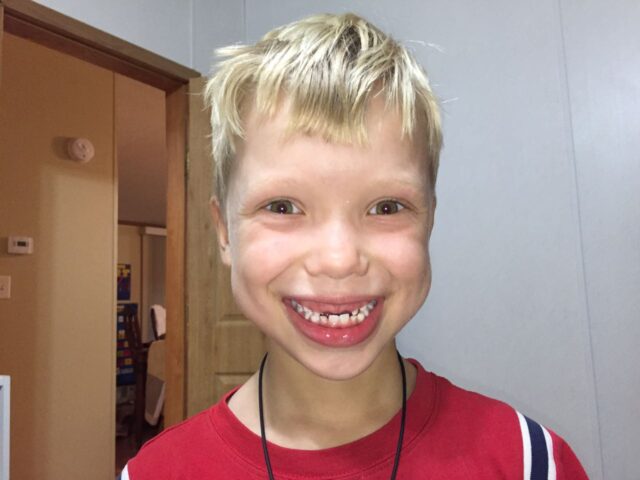
Amazon Associate Disclosure: As an Amazon Associate I earn from qualifying purchases. This means if you click on an affiliate link and purchase the item, I will receive an affiliate commission. The price of the item is the same whether it is an affiliate link or not. Regardless, I only recommend products or services I believe will add value to Share Your Repair readers. By using the affiliate links, you are helping support Share Your Repair, and I genuinely appreciate your support.

